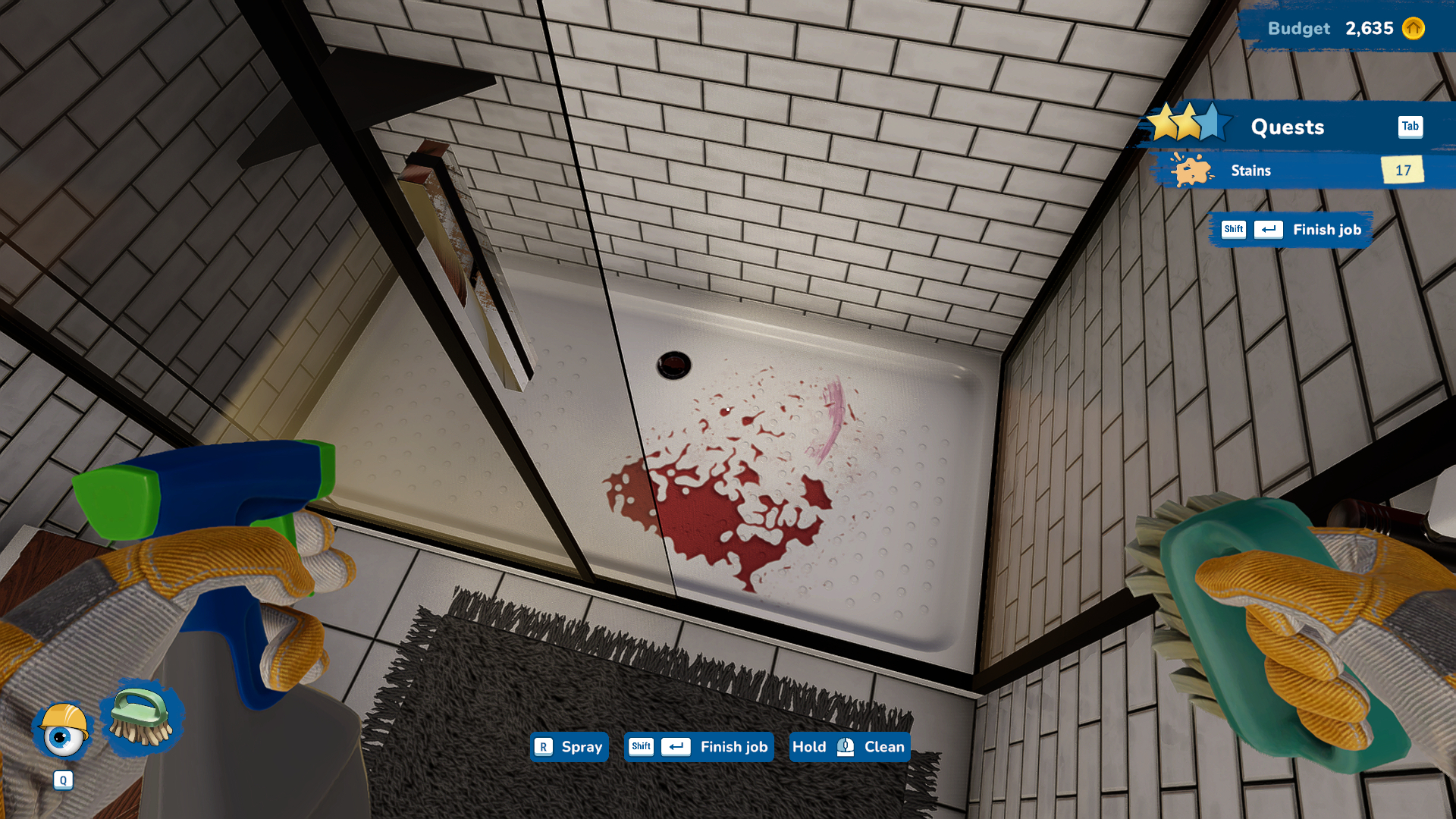Our Verdict
More of a touch-up than a full-on renovation, but Sandbox mode is exciting.
PC Gamer's got your back
What is it? A casual building sim about restoring houses and selling them for profit.
Expect to pay $40/£35
Release date Dec 14, 2023
Developer Frozen District, Empyrean
Publisher Frozen District, PlayWay S.A.
Reviewed on Intel Core i7-10750H, 16GB RAM, GeForce RTX 2060
Steam Deck TBD
Link Official site
You can see why the original House Flipper was such a hit. Its cosy fantasy of home ownership and fulfilling work was a soothing balm after a miserable day at the office, and that fantasy is only strengthened in this sequel. The basics remain the same: jobs appear in your email, from simple cleaning tasks to full-on home renovation, and you can use the profits to purchase properties from the auction house, ready to be glowed up and flipped for even greater profit.
Accept a job and you'll appear outside the house with your bag of tools. Bin bags to collect the piles of rubbish, one measly cloth to wipe down floors, walls and ceilings (weirdly, the first game's mop tool is nowhere to be found), a roller and scraper for painting and wallpapering, and so on. I haven't played the previous game, but the interface for managing all these tools seems neater and easier to grasp here. It's no longer mimicking an in-game tablet, so menu icons are free to be a little more gamey: larger and more colourful, easier to identify at a glance.
In each room you're now given 'quests' to perform, although I'm sure Tolkien would raise an eyebrow to hear 'bag all the rubbish' and 'clean all the dirt' being described as such. You can even use your new Witcher senses—or whatever the game calls them—to highlight interactables in gold. This is a godsend when it comes to finding every miniscule speck of junk.
Tidy work
Straddling simulation and more casual play—which is really the whole ethos behind House Flipper—these actions mimic real life, to an extent. So you have to physically drag the paint roller around—but you don't need to clean the brush, or even remove the old tiles or wallpaper first. When building a brick wall, you watch a lovely animation play, but all you're doing is holding the mouse button down, as your character plucks bricks and mortar from thin air. Mostly, I'm happy with this middle ground—smashing walls down with the sledgehammer feels particularly satisfying—but I'd feel more connected to the work if I also had to clean up the rubble.
Generally, the acts of cleaning and tidying, building and buying are slick and easy to pick up, but the game does struggle with its 3D space sometimes. Occasionally I had to reposition and balance on furniture, and agonisingly adjust the mouse cursor to position ornaments on high shelves. Put an item in the wrong place and it can usually be moved with little trouble. However, wallpaper and tiles are a different matter. There's no real way to delete things, so you either have to sell or replace errant items. Having to find and buy the original flooring in the online shop, when all you've done is put one floorboard in the wrong place, is extremely annoying.

But, overall, the graft is rewarding. It's not so detailed a renovation sim that it feels exhausting or overwhelming, nor so casual that you barely need to be there. Renovating feels cosy (surely the gaming term of 2023), and that's an element that's been expanded for House Flipper 2.
There's now a wholesome story campaign tying all your freelance jobs together, as you tackle projects across the town of Pinnacove. You'll gradually expand your operation, from Crayfish Coast to Suburban Pinnacove and ultimately Coralroot Forest, taking on bigger jobs and earning more money in the process. As a setting, it's a little bit Cabot Cove and a little bit Scandinavia, as you restore a house that would do Jessica Fletcher proud, then a woodland manor resembling a stave church.
You'll want to earn three stars (the best possible score) on jobs, and only partly because it earns more money and it feels more satisfying to properly finish the job. You'll also want to please your clients, who are a more overt presence this time around, thanks to the phone calls that pop up as you work.

These aren't randomly assembled properties but bespoke locations with a dusting of environmental storytelling. You can see the paint left over after a raucous party, and almost smell the odour of the nerdy basement you have to tidy. As I restored a bedroom for a grandmother who was eagerly awaiting her grandson's arrival, I was touched to open a box and discover his train set. Delicately assembling it on his desk—because I wanted to, not as a marked objective—is one of the most satisfying things I've done in a game all year.
Sandbox mode
On the flip side, there's the new Sandbox mode featuring no clients at all: just empty plots where you can build houses from scratch. Pick a setting and plot size and design a house without having to worry about money—and with the handy ability to fly at the touch of a button. I was initially pretty confused when I couldn't locate most of my existing tools, but they're replaced here by a new range that lets you more speedily plonk down walls and roofs, and even sculpt the environment as you see fit.

However, building houses is only part of the Sandbox experience—the integrated modding tools let you share them with other players. The game uses mod.io rather than the Steam Workshop for mods, as the original did, but you can now upload houses for the first time. Right now, there are only a handful online, but I downloaded a couple to test them out and was exploring player-made homes within a couple of minutes.
The most interesting thing about Sandbox houses is that you can turn them into jobs. That is, run-down properties in need of renovation. Slather them in mud, smash up the floorboards and sprinkle junk all over the worktops—with all the same tools at your disposal as the developers—then upload them for other players to fix. It's sure to be the defining feature of this quietly confident sequel, which doesn't make many big changes—it just opens up its homes to the community.
More of a touch-up than a full-on renovation, but Sandbox mode is exciting.
Tom loves exploring in games, whether it’s going the wrong way in a platformer or burgling an apartment in Deus Ex. His favourite game worlds—Stalker, Dark Souls, Thief—have an atmosphere you could wallop with a blackjack. He enjoys horror, adventure, puzzle games and RPGs, and played the Japanese version of Final Fantasy VIII with a translated script he printed off from the internet. Tom has been writing about free games for PC Gamer since 2012. If he were packing for a desert island, he’d take his giant Columbo boxset and a laptop stuffed with PuzzleScript games.



